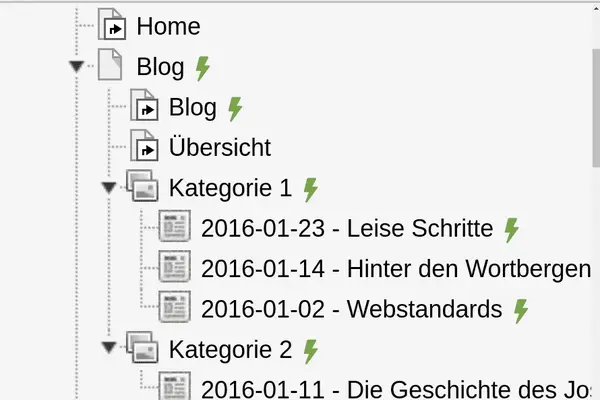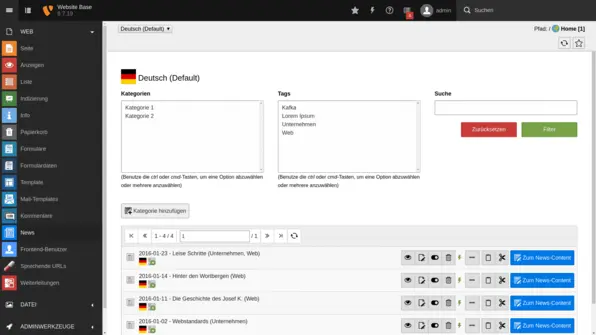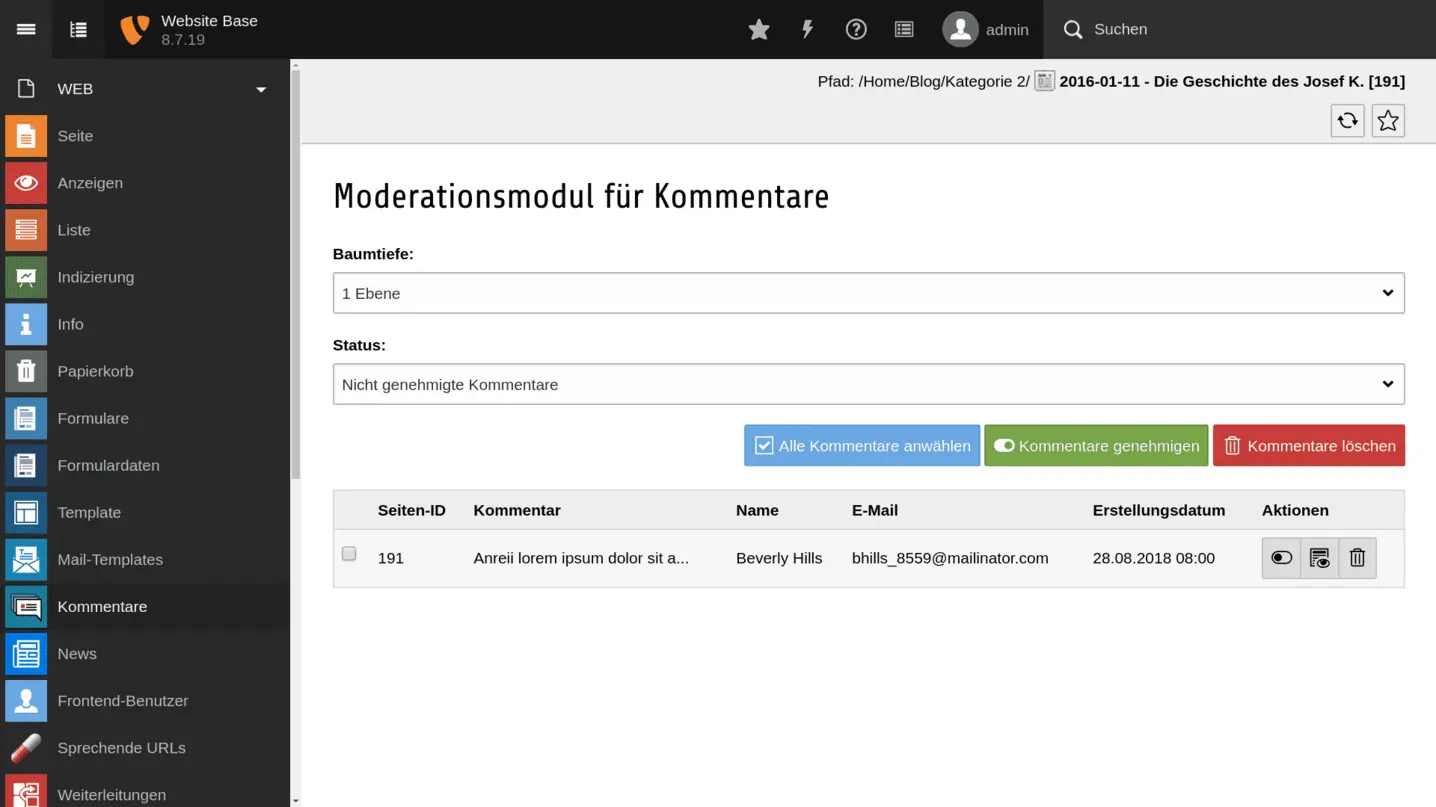The Website-Base is the perfect foundation for the news section of your website. We've extensively redesigned the traditional methods for authoring articles in TYPO3, making writing your articles as intuitive and easy as never before. In addition, we were able to provide more freedom for your creativity and implemented some other helpful features such as a comment section.
The Classic Method for Creating News Pages
The usual methods for creating articles and blog entries based on TYPO3 restrict authors in many ways. Usually you would define a design for an entire news section. Articles in this section are then created as simple text files with minimal formatting options and get rendered in the given design automatically. This way, images and other media can barely be used purposefully. As you can see, the classic methods don't give writers much creative freedom.
In addition, setting up a blog or news section is typically very complicated, as the correct data has to be entered in several places in the backend so that the correct articles are found and linked in the right place in the front end.
Our Solution – Page-Based Article Creation
We've addressed the issues above and created a solution for creating news sites and blogs that is intuitive to configure and operate, enables individual article designs and makes the use of additional website base features possible.
Better Structure and Overview
For the creation of news and blog pages we have defined so-called category and news pages. These behave in the same way as normal website pages, but offer additional features that make working with news and blogs much easier.
After creating a category page, you can then add news pages underneath it, which are automatically linked to on the category page in a teaser area.
Various plugins for linking to the article pages are included in the Website-Base. These plugins are added to a page on top of all news categories and automatically display all articles, sorted by their categories or tags, in tile-like teasers. If needed, these plugins can automatically display the latest articles first or, if there are many entries on a page level, automatically create a page navigation for the link list. This means that linking created articles only takes a few minutes and offers an optimal overview.
In the image on the left you can see the backend structure of the demo blog on our preview page.
These teasers use extended metadata of the article pages, including author, date and teaser photo or text, and display them in the tiles. In addition, the plug-ins offer filtering options so that front-end users can exclusively view articles of a specific category.
More Creative Freedom
The implementation of the news system in the Website-Base makes it possible to design articles individually and flexibly by using the included content elements. There are virtually no limits for the authors because articles are treated like normal pages and created in the same way by an easily understandable modular system. This makes creating messages and blog entries easier, more intuitive, and more versatile at the same time.
In addition, this implementation makes it possible to dynamically integrate the article overview. Thus, additional content such as an introductory text before the article teasers, can be created on the category and top pages.
Central Administration of all Articles
The administration of the already created articles was organized centrally in the Website-Base by the News module. This module lists all articles of the entire website clearly. Here the articles can be filtered, edited and deleted by category and/or tags. In addition, these can be opened with a single click in the normal page module to edit the contents. Conversely, the page module for category and news pages also provides a button for switching to the news module.
Other Features of This Blog System
In addition to the great ease in creating and editing blog entries, some smaller features are also included:
- The approximate reading time is calculated based on the word count of the article and displayed at the beginning of the page.
- If a category contains several articles, navigation arrows for the next and previous article appear at the end of each article.
- All front-end elements are 100% responsive.
- Full support for multiple languages if needed.
Reader Interaction
The "Like" Feature
Similar to other social media, blog entries and other articles created with the website base will have a button that allows readers to mark that they liked the article.
On the one hand, this number shows the author whether his article is well-received, on the other hand, this is also displayed in the teaser with which the articles are linked, which makes it easier for other visitors to recognize particularly readable articles.
The Comment Function
The Website-Base message system is delivered with a comment function. By default, a comment section is added to every article page, which gives readers a place to give feedback, ask questions, or discuss. With an included plugin, such a section can also be inserted anywhere on all normal pages.
For the moderation of the comments entered here, a module was implemented in the TYPO3 backend. Here, administrators and editors can browse and filter all comments and hide or confirm individual comments, remove them, and get information about the commentators.
In order to notify users about activities related to their comments, an automated mailing system has been implemented to send, for example, messages about new responses to a comment.
Sharing Articles
To encourage the reader to share the articles, buttons are automatically included at the end of each blog entry to share a link to the associated page. These are available for many networks and, like commenting areas, can be integrated as required on normal pages. You can get an idea of how they work with the following buttons.
Would you like to know more?
All information about the available editions can be found on the webpage for our TYPO3 Website-Base. You have the possibility to get a Website at a Fixed Price or you decide for a Website as a Service package, with which no further costs for hosting or security and function updates will come up to you.


